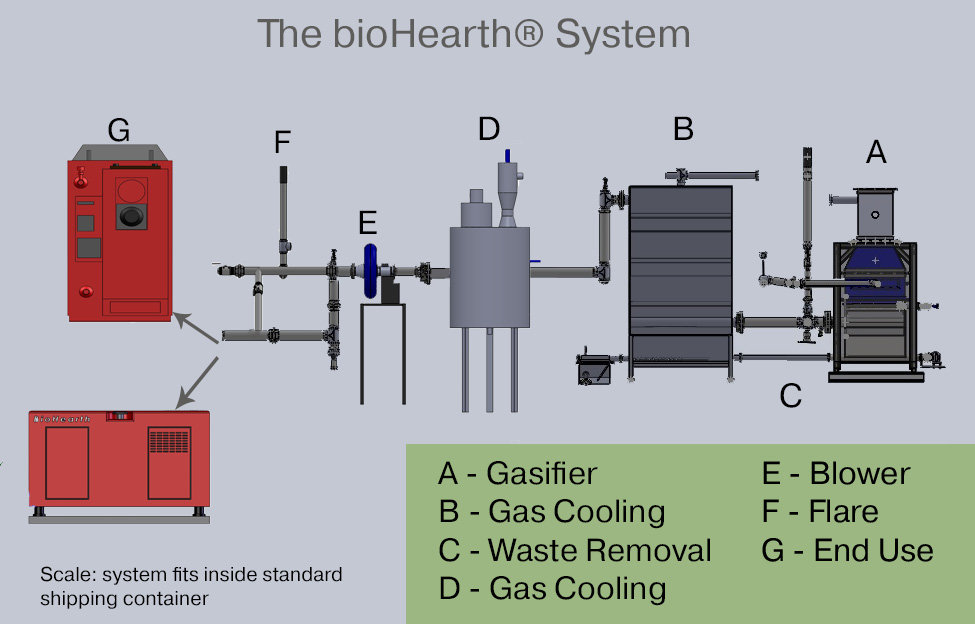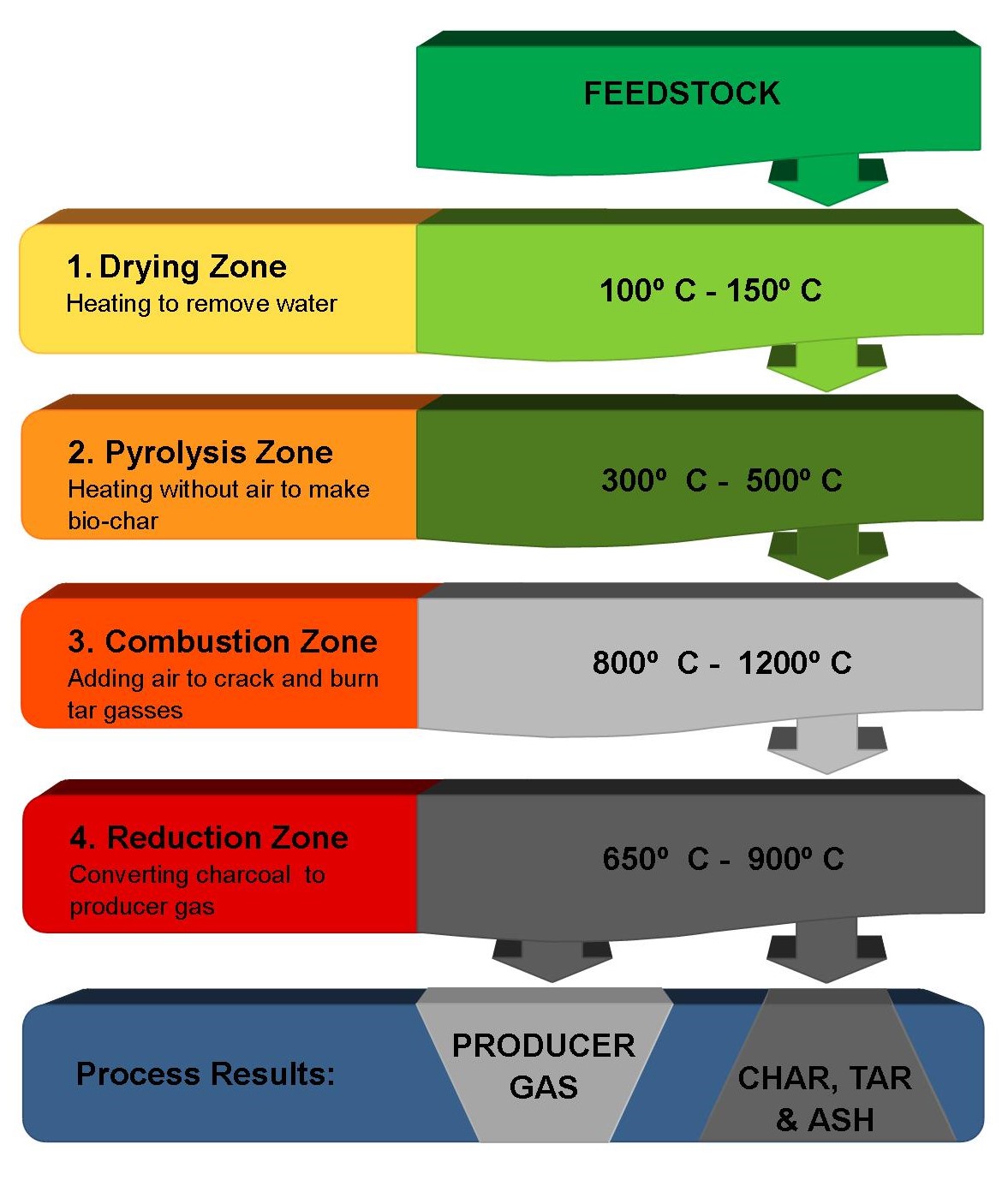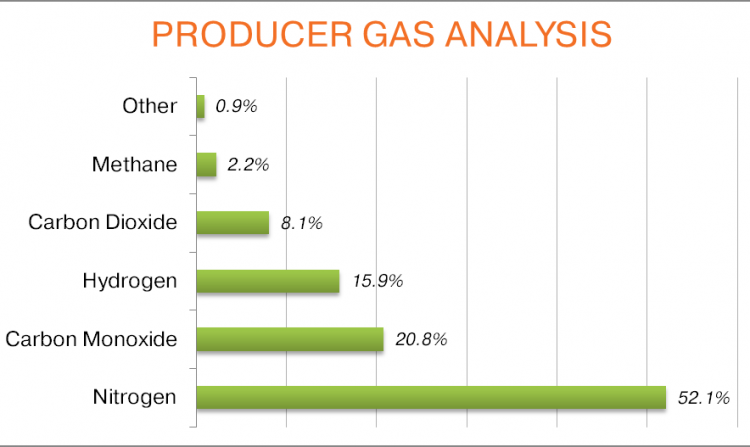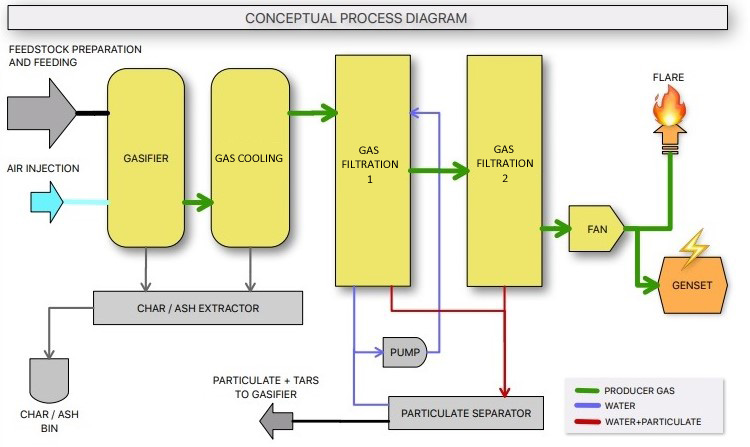
THE BIOHEARTH® DESIGN
Precision gasification with a state-of-the-art design.
Our downdraft gasification system incorporates all the right elements to provide the simple, easy way to convert your waste to energy. What makes it so efficient? The key is in the process. We pride ourselves in developing a system where we solve past gasification system hang ups at the source. The result is a system that is safe, not overly complicated with unnecessary bells and whistles to ensure you get the job done at a reasonable price.

WHAT IS GASIFICATION?
Gasification is a process that converts organic matter (biomass and other organic wastes) to a gas comprised primarily of carbon monoxide and hydrogen called Producer Gas. The producer gas can be used in multiple downstream applications including heating and power generation.
Downdraft gasification is one of several types of gasification. It is optimal because it creates clean producer gas that is able to power an internal combustion engine, thus creating electricity. The flow of air and gas is downwards (hence the name). The efficiency of the system is all to do with the residency time of the feedstock in the 4 “zones” it passes through as it breaks down into a gaseous form: drying, pyrolysis, combustion and reduction.
FOUR ZONES OF GASIFICATION
All four zones” occur in one piece of equipment within bioHearth® system, known as the Gasifier.
DRYING ZONE: When the feedstock enters the gasification chamber, it enters the drying zone. Just as it sounds, this zone begins to heat the feedstock, removing any remaining water.
PYROLYSIS ZONE: Pyrolysis is the application of heat to the organic fuel. This zone creates almost a vacuum where there is an absence of air. The solid fuel breaks down into charcoal and various tar gasses and liquids. It is essentially the process of charring.
COMBUSTION ZONE: This process is crucial for the production of clean gas for powering an internal combustion engine. The producer gas must go through what is called cracking to ensure proper combustion. In the course of combustion, the high temperatures produced decompose the large tar molecules that pass through the combustion zone. This stage is very important because it breaks down tars so they do not condense into a sticky substance that can create restriction within the engine or the bioHearth® system.
REDUCTION ZONE: At this point, the gas is a combination of carbon dioxide and water vapor. Reduction is achieved by passing these elements across a bed of hot charcoal. The carbon in the hot charcoal is highly reactive with oxygen found in the water and the carbon dioxide. The charcoal strips the oxygen off the water vapor and carbon dioxide resulting in hydrogen and carbon monoxide.

PRODUCER GAS: VERSATILE AND EFFICIENT

Once the gasification process is complete, the end result is producer gas, a gas primarily composed of hydrogen, carbon monoxide and nitrogen. It carries very similar properties to natural gas. Depending on the feedstock used, the exact analysis of the producer gas will vary. This is an example of a breakdown of producer gas from wood as a feedstock.
From there, the producer gas travels through the bioHearth® cooling system, where large tars and particulate are condensed. The condensation is important so that they are ready to be removed by the 2 stage gas filtration system. The cleanliness of the gas is important for the end use. It can be used to power an internal combustion engine, feed a boiler or a burner, and could be used to create steam.An internal combustion engine requires clean gas to create electricity.
The bioHearth® is self-cleaning as a result of the ash and char removal system that runs through the gasification, gas cooling and gas cleaning stages of the system. The entire process is motivated by a fan that creates a vacuum effect, pulling the gas through the system and then pushing the gas to the end use. Surplus producer gas is sent to the flare for safe disposal.

GASIFICATION LITERATURE
Biomass 101: Biomass Fact Sheet

Biomass is the burning of biological products, such as wood and plants to produce heat, electricity, and hot water. Biomass energy can also be derived from: … [Read More]
Downdraft Gasification and the Environment

Renewable energy from biomass using a gasification system is an environmentally friendly method and helps to reduce our dependence on fossil fuels. … [Read More]
Sustainable Production of Biomass Energy

Forests and woody crops are a source of energy through the conversion of woody biomass into convenient solid, liquid or gaseous fuels …. [Read More]
Biomass is the New Fuel: Biomass Preparation

Biomass feedstocks have to be prepared, stored, and transported to the energy conversion process before they can be used to generate power or produce steam. … [Read More]
Combined Heat and Power Technologies

The type of equipment that drives the overall system (i.e., the prime mover) typically identifies the CHP system. Prime movers for CHP systems include… [Read More]
Low Emissions and Gasification

Gasification-based processes for power production characteristically result in much lower emissions of pollutants compared to … [Read More]

